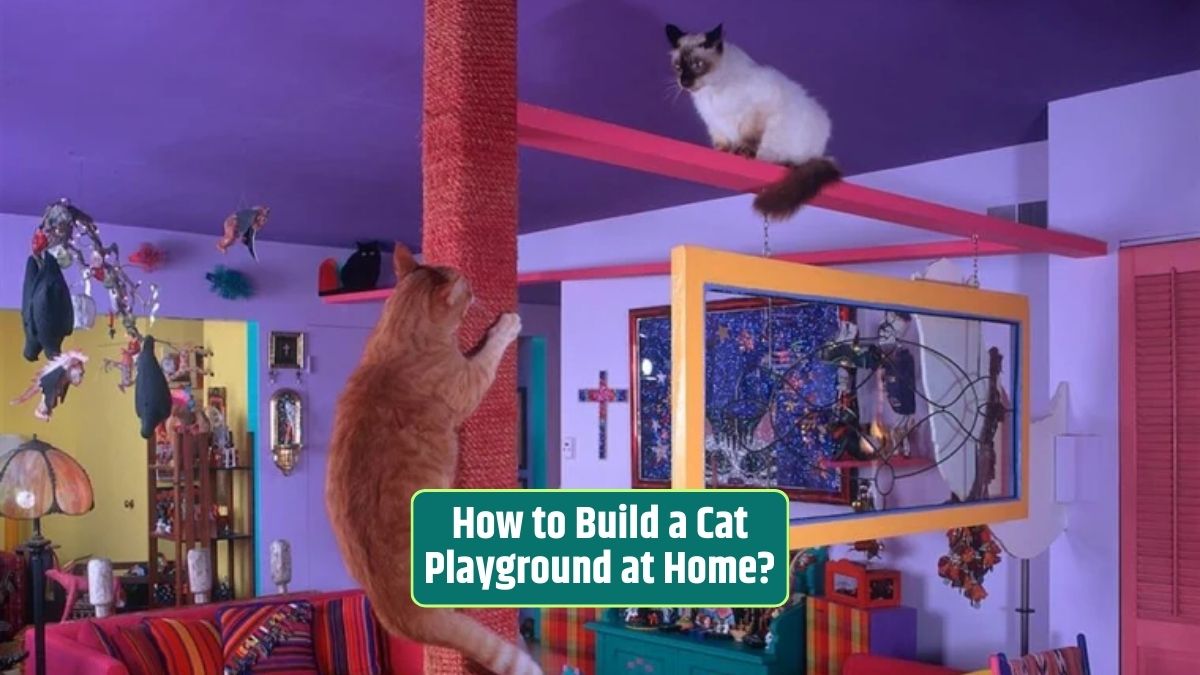Cats are known for their playful and curious nature. Creating a cat playground at home is not only a great way to keep your feline friend entertained but also provides them with mental and physical stimulation. In this guide, we’ll explore how to build a cat playground that will have your cat purring with delight.
Importance
Before we embark on the journey of building a cat playground, let’s understand why it’s essential:
- Mental Stimulation: A cat playground provides an environment for exploration and problem-solving, keeping your cat mentally sharp.
- Physical Exercise: It encourages exercise, which is vital for your cat’s health and helps prevent obesity.
- Stress Reduction: Playgrounds offer an outlet for your cat’s energy, reducing stress and anxiety.
- Bonding Opportunity: Building a playground together can strengthen the bond between you and your cat.
Materials
Here’s a list of materials you’ll need to create a fun and engaging cat playground:
- Wooden boards or plywood: For building structures.
- Carpet or sisal rope: Ideal for covering surfaces and providing scratching opportunities.
- Cardboard boxes: Great for creating tunnels and hideaways.
- PVC pipes or plastic tubing: For constructing tunnels and hideouts.
- Shelves or platforms: To create elevated areas.
- Toys: Such as feather wands, balls, and laser pointers.
- Nails, screws, and a hammer or a power drill: For assembling the playground.
- Non-toxic paint or stain: For decorating and protecting wooden surfaces.
Steps to Build
Let’s dive into the step-by-step process of creating a cat playground:
- Design the Playground:
- Plan the layout of your cat playground, including structures, tunnels, and shelves. Consider your available space and your cat’s preferences.
- Construct the Base:
- Build a sturdy wooden base or platform for your playground. This will serve as the foundation for other structures.
- Cover with Carpet or Sisal Rope:
- Cover the wooden surfaces with carpet or sisal rope. Cats love to scratch and this provides a designated scratching area.
- Create Hideaways:
- Use cardboard boxes, PVC pipes, or plastic tubing to create tunnels and hideaways. Cats enjoy exploring and seeking shelter.
- Add Elevated Areas:
- Install shelves or platforms at different heights. Cats love to perch and observe their surroundings from above.
- Hang Toys:
- Attach toys like feather wands or balls at various points. This will keep your cat engaged and entertained.
- Safety First:
- Ensure all structures are stable and secure to prevent accidents.
- Decorate and Paint (Optional):
- Add some personal touches by decorating the playground. Use non-toxic paint or stain for wooden surfaces.
- Introduce Your Cat:
- Encourage your cat to explore the new playground. You may need to use treats or toys to entice them at first.
- Enjoy Playtime:
- Spend quality playtime with your cat in the new playground. This bonding experience is beneficial for both of you.
Conclusion
Building a cat playground at home is a rewarding endeavor that enhances your cat’s well-being and provides hours of entertainment.
Remember to consider your cat’s preferences and safety when designing and constructing the playground. With a little creativity and effort, you’ll create a space that your cat will adore.
FAQs
How much space do I need for a cat playground?
The space you need depends on the size and complexity of the playground. A small one can fit in a corner, while larger setups may require a dedicated room.
What type of toys are best for a cat playground?
Toys that encourage play and interaction, such as feather wands, balls, and interactive puzzle toys, are great choices.
Can I buy a ready-made cat playground instead of building one?
Yes, you can purchase pre-made cat playgrounds, but building one allows for customization and can be a fun DIY project.
How often should I change the layout of the playground?
Cats enjoy novelty. Consider changing the layout or adding new elements every few months to keep it exciting.
Are there safety concerns I should be aware of?
Ensure all structures are stable, and there are no sharp edges or small parts that your cat could swallow. Regularly inspect the playground for wear and tear.









